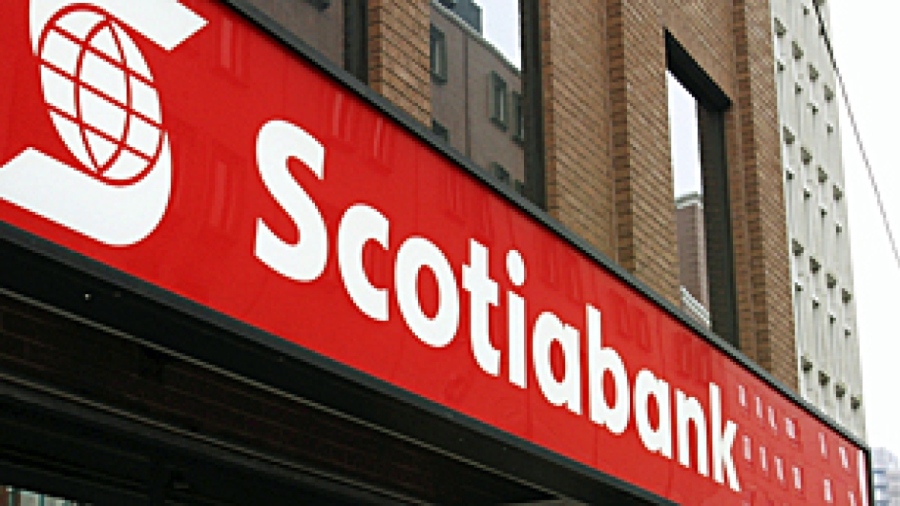 The third biggest bank by assets in Canada, Bank of Nova Scotia, posted a profit for its fiscal second quarter Tuesday that was 12% lower compared to the same period one year ago because of a charge for restructuring and larger reserves for its souring energy loans.
The third biggest bank by assets in Canada, Bank of Nova Scotia, posted a profit for its fiscal second quarter Tuesday that was 12% lower compared to the same period one year ago because of a charge for restructuring and larger reserves for its souring energy loans.
Scotiabank, based in Toronto, capped the largely better than had been expected earnings season for the biggest lenders in Canada despite the headwinds in the economy and the lower prices of commodities.
Scotiabank earned 1.58 billion in Canadian dollars equal to $1.21 billion or 1.23 per share of Canadian dollars for its quarter that ran from February through April. The earnings were down from last year’s 1.80 billion Canadian dollars equal to 1.52 Canadian dollars per share.
As with other Canadian lenders, Scotiabank has cut costs, as the entire industry needs to boost its productivity and drive its growth through its digital channels that includes the popular mobile devices.
Adjusted not to include special items, Scotiabank announced it had earned 1.48 Canadian dollars per share. Analysts were expecting a profit of $1.42 Canadian dollars per share.
CEO Brian Porter at Scotiabank said the strength of the bank’s results for the quarter underscores its continued strong performance in its Canadian and International banking businesses.
However, one analyst cautioned that the adjusted profit of the bank was bolstered due to a gain of close to 8 cents per share for a recent sale of an asset.
The bank said its results had been affected by higher losses in loans in its energy sector, which it is expecting will drop starting with the next quarter.
Scotiabank has one of the largest direct gas and oil exposures of the major lenders in Canada.
Provisions for loan loss or the money a bank must set aside to cover its bad loans increased from $448 million Canadian to $752 million Canadian.
The bank said it attributed the increase year over year in provisions for its energy loans as well as a few of its commercial accounts across Puerto Rico.
Scotiabank is expecting more fallout due to the energy sector problems as it increased its collective allowance by $50 million Canadian. The collective allowance is a reserve for a day in the future that banks proactively build to cushion potential future losses.
